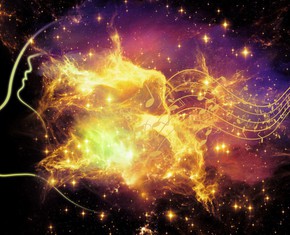The views expressed in our content reflect individual perspectives and do not represent the authoritative views of the Baha'i Faith.
Surely every adult, me included, remembers moments in life they would rather forget. The other day I had a dream about one of those moments, and I woke up feeling completely ashamed of my past self.
The dream—or maybe I should call it a nightmare—reminded me, in excruciating detail, about something I did a long time ago. I didn’t do anything immoral or illegal—instead, I basically treated someone poorly, in an unthinking way. I didn’t mean to hurt anyone’s feelings, but without going into the mortifying details, I did exactly what the Baha’i teachings warn us against—I became a source of sorrow:
Beware lest ye harm any soul, or make any heart to sorrow; lest ye wound any man with your words, be he known to you or a stranger, be he friend or foe. Pray ye for all; ask ye that all be blessed, all be forgiven. – Abdu’l-Baha, Selections from the Writings of Abdu’l-Baha, p. 73.
Anyway, I had tried to forget about that incident, but my nightmare pointedly reminded me. On my personal hit parade of low consciousness, that incident went immediately to Number One. Of course, we all have those kinds of regrets. No human being gets through life without them.
When I thought about the dream later, though, it made me realize something important—everyone has moments of low consciousness and high consciousness. We each experience the various levels of that broad spectrum at different times in our lives.
Logically, then, we all possess a spectrum of consciousness across multiple levels of awareness that we can control, experience and traverse. Each of us has moments of low consciousness, when the personal, selfish ego gets in the way of valuing others and treating them well; and moments of high consciousness, when we selflessly transcend our own personal concerns and extend ourselves in the service of others or the service of a higher altruistic goal. So the question becomes: how do we move from the stage of low consciousness to a higher one? How can we evolve spiritually?
Many perceptive thinkers, philosophers and writers have wrestled with this concept of a spectrum of consciousness and the evolution it implies. Plato, Socrates, Heidegger, and most recently Ken Wilber have all delved deeply into the realm of our consciousness and its relative, ascending levels of development and maturity:
… the Spectrum of Consciousness is a pluridimensional approach to man’s identity; that is to say, each level of the Spectrum is marked by a different and easily recognized sense of individual identity, which ranges from the Supreme Identity of cosmic consciousness through several gradations or bands to the drastically narrowed sense of identity associated with egoic consciousness. – Ken Wilber, Psychologia Perennis: The Spectrum Of Consciousness
Wilber also points out, in several of his works, that every major religious and metaphysical tradition maintains that human consciousness has multiple dimensions—the Buddhist vijnanas, the Hindu koshas, the Sufi “valleys” of awareness, etc.
The earliest scientific observers of nature—Aristotle, the medieval Islamic scholar Dinawari, Carl Linnaeus—plotted plant and animal growth with simple measurements, and found that all growth comes in stages. These stages, others like Lamarck and Darwin later discovered, have a striking similarity in their patterns across the range of all life forms, adding layers of complexity at each new stage. The Baha’i teachings make the same essential observation about the levels of our spiritual consciousness:
The suckling babe passeth through various physical stages, growing and developing at every stage, until its body reacheth the age of maturity. Having arrived at this stage it acquireth the capacity to manifest spiritual and intellectual perfections. The lights of comprehension, intelligence and knowledge become perceptible in it and the powers of its soul unfold. – Abdu’l-Baha, Selections from the Writings of Abdu’l-Baha, p. 285.
Man must walk in many paths and be subjected to various processes in his evolution upward. Physically he is not born in full stature but passes through consecutive stages of fetus, infant, childhood, youth, maturity and old age ….
Briefly; the journey of the soul is necessary. The pathway of life is the road which leads to divine knowledge and attainment. Without training and guidance the soul could never progress beyond the conditions of its lower nature … – Abdu’l-Baha, The Promulgation of Universal Peace, pp. 295-296.
You can find stage-specific ladders of spiritual growth in all religious traditions. The Hindu Vedanta koshas (sheaths of consciousness) present five specific levels of spiritual development. At the top is Brahman, the Hindu name for ultimate spirit; and Ananda, which means bliss.
In many forms of Yoga, as it applies to both Hindu and Buddhist practices, seven chakras, or levels of self, ascend from the most basic human impulses to the highest. These chakras play a major role in several Eastern spiritual traditions, teaching adherents how to attain deep levels of realization by moving through a sequence of developmental levels of awareness. The Buddhist Noble Eightfold Path fulfills a similar function, leading the believer toward self-awakening, wisdom and nirvana.
Judaism’s mystical tradition, the Kabbalah, offers ten stepped levels of spiritual realization, ending in Kether Elyon, the “supreme crown” of the Supreme Being. These ten levels of inner mystical and moral development, called sefirot, represent the virtuous attributes of the Creator, which continually sustain the physical universe and make existence itself possible.
In the early Gnostic and Coptic traditions, Christian mysticism describes a system of spiritual stages that proceed upward from natural law to mental rationality to Divine Logos. Utilizing between three and five specific phases of the soul’s inner development, these Christian mystical traditions focus on a spiritual transformation of the ego-based self, by following a path that produces more fully realized human beings and thus transcends the material world and approaches spiritual enlightenment, or gnosis.
The mystical Islamic practice of the Sufis describes the goal of all spiritual search and practice as a series of steps to transmute the lower self, the human ego, from its primal state to a higher one. The Sufi way emphasizes working to acquire a praiseworthy character and purifying the heart with practices of prayer, meditation and dhikr, or silently repeating the names of God. The seven Sufi “stations” of the soul, known as maqaam in Arabic, embody all mystical knowledge and comprise a ladder of ascent for the fully-realized, aware spiritual life.
The Baha’i teachings, especially in Baha’u’llah’s two mystical books The Seven Valleys and The Four Valleys, present us with new approaches to this ancient, universal truth:
… the stages that mark the wayfarers’ journey from their mortal abode to the heavenly homeland are said to be seven. Some have referred to them as seven valleys, and others, as seven cities. And it is said that until the wayfarer taketh leave of self and traverseth these stages, he shall never attain the ocean of nearness and reunion nor taste of the matchless wine. – Baha’u’llah, The Seven Valleys, newly translated version, in The Call of the Divine Beloved, p. 15.
In the next essay in this series, we’ll look at how the true seeker can move from one of these levels of consciousness to the next.
















Comments
Sign in or create an account
Continue with Googleor